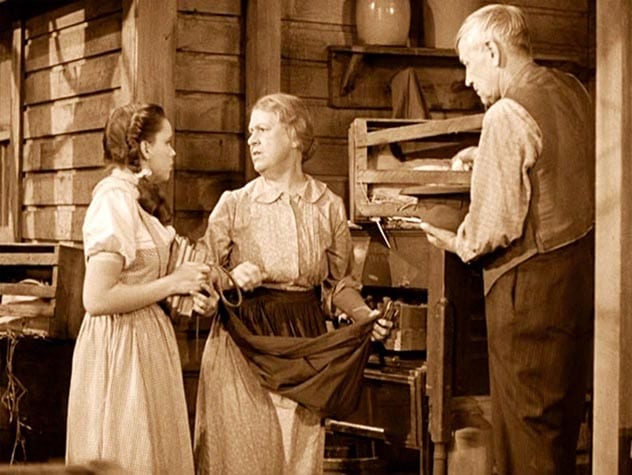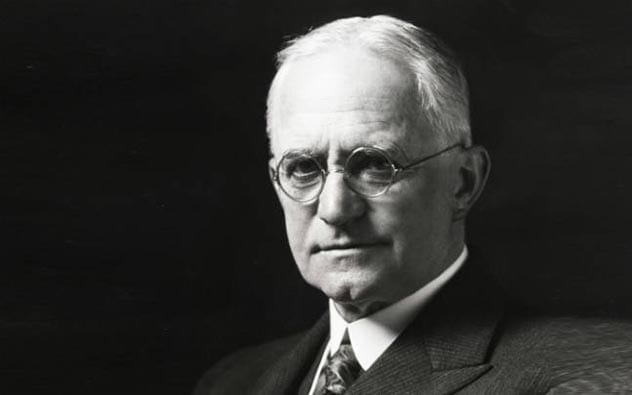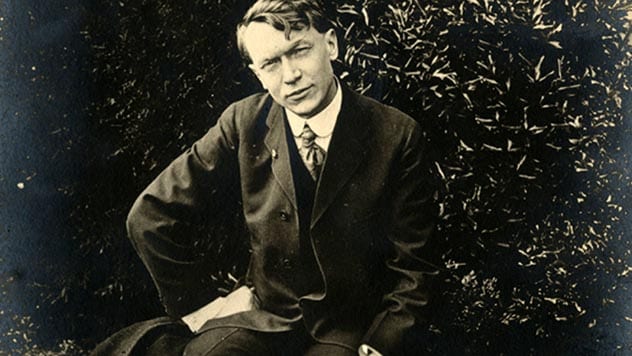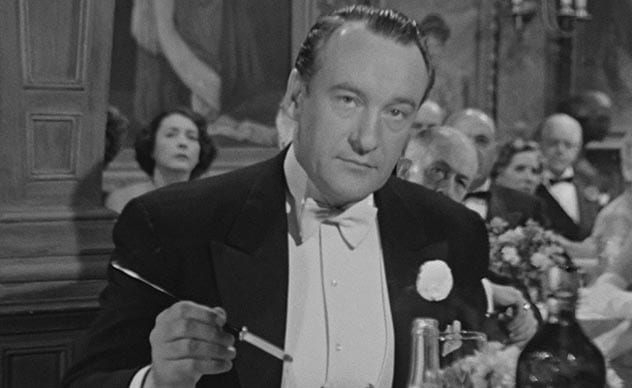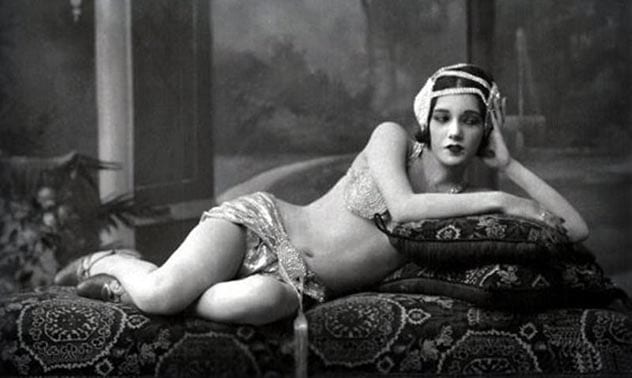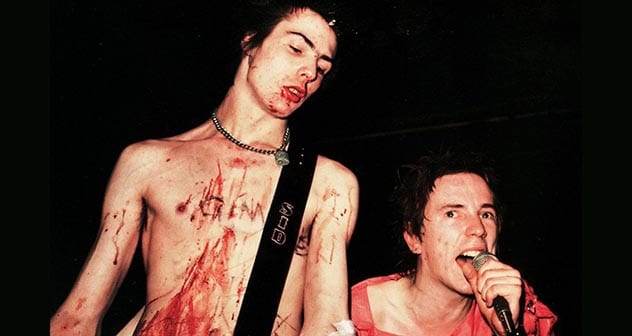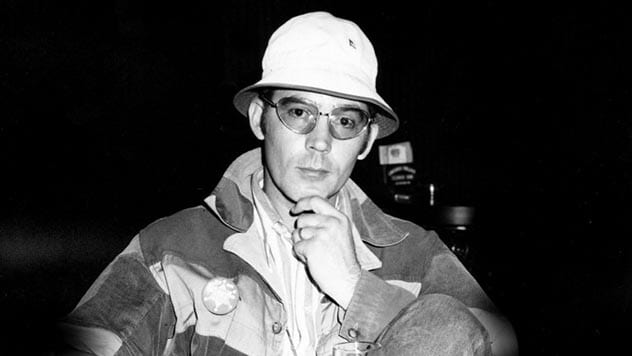See Also: 10 Gruesome Facts About Suicide And Death Cleanup However, it seems, no amount of money, fame or success can prevent people from getting old, or ill, and, perhaps, success brings pressures of its own that most people will never understand. Whatever the reasons, there are times when those who appear to have it all, can struggle just as much, if not more, than the rest of us. Here are 10 successful people who decided that life was no longer worth living, and expressed themselves, for the last time, in the form of a suicide note.
10 Clara Blandick
Clara Blandick had a forty-year career in films, although she is most famous for playing Aunt Em in The Wizard of Oz. She retired from films in 1950 and spent the rest of her life living at the Hollywood Roosevelt Hotel, where she received few visitors, and appeared to have largely been forgotten. Her retirement coincided with a marked decline in her health. Her eyesight was failing, and she was in constant pain from her severe arthritis, which affected her mental health. One Sunday in April 1962, she went to church, then began to rearrange her room. She put out her favorite photos, the mementos of her long career, arranging them with care. On her desk, she laid out her resume, and a collection of press clippings and reviews, so that the emergency services would know who she was. Then she did her hair and make-up, put on her favorite dressing gown, and sat on the couch with a gold blanket over her knees. She must have been quite a sight, although the plastic bag that she asphyxiated herself with probably spoiled the scene a little. She left behind a note, which read, “I am now about to make the great adventure. I cannot endure this agonizing pain any longer. It is all over my body. Neither can I face the impending blindness. I pray the Lord my soul to take. Amen.”[1]
9 George Eastman
George Eastman had a profound impact on modern life. He was the inventor of the Kodak camera, the first camera that made photography easily accessible to the public, and began the craze for amateur photography that is still going strong today. Cameras had previously been expensive, complicated to operate, and extremely unwieldy. His cameras were small, cheap, and simple to use, and his company became one of the most successful businesses in the world. Eastman pioneered a number of developments in photography, but his Brownie camera, which cost $1 and could be used by amateurs and children was his most popular invention. It became a favorite of servicemen during World War I because it could be tucked into a kit bag. George Eastman was endlessly inventive and a great businessman. He was respected by his employees, whom he treated well, and was known to be a generous philanthropist, giving away over $100 million during his lifetime. His health, however, began to degenerate, and he found it difficult to do the activities that he once enjoyed. In 1932, George Eastman committed suicide, with a gunshot wound to his heart. The note that he left behind was brief but to the point. It seems that Eastman put his practical mind to the problem, and came to his own conclusion. “To my friends: My work is done. Why wait? G. E.”[2]
8Tony Hancock
Tony Hancock was an actor and comedian who specialized in playing characters who had been treated badly by life. His characters were puffed up with a sense of their own self-worth, and bemused to realize no one else recognized his genius. Tony Hancock’s alter-ego was, it seems, drawn very closely from life. Hancock was a troubled man who resented anyone stealing his limelight. He disliked his writers, the hugely successful writing team of Galton and Simpson, getting credit for his lines, and disliked his co-star, Sid James, getting any funny lines, which was awkward, since James was also a comedian. Hancock insisted that they drop Sid James from Hancock’s Half Hour, and then he fired his writers, a decision which he later bitterly regretted. As his career began to falter without his writers, Hancock’s drinking, which had always been problematic, became much worse. In a last-ditch attempt to resurrect his fortunes he agreed to make a series in Australia. But Hancock was not happy, and, believing that the filming was not going well, he killed himself in his hotel room. His suicide note had an echo of Hancock’s Half Hour and the character who believed that the world is against him. “Things just seemed to go too wrong too many times”, he wrote, not knowing the Australian TV company had already decided to commission a second series.[3]
7 Vachel Lindsay
Vachel Lindsay was an American poet, who was particularly well known for his performance poetry, which he described as ‘higher vaudeville’. Much of his work is considered culturally insensitive today, particularly for his naive and racist portrayals of African-Americans. Sometimes, for example, he appeared in black face when he read his poem about The Congo, a place he had never visited. But, it seems, this middle-class white man tried hard to depict small town America in all its vagaries. And, for a while, small town America appreciated his efforts. His patriotic verses were well appreciated throughout World War I, but, when the war was over, his popularity began to wane. His readings were sparsely attended, his income declined, and he was the subject of much mocking for his overly dramatic style. At the same time, his health problems increased, until, in 1931, broke, ill and depressed, Vachel Lindsay killed himself by drinking a bottle of lye, which was a typically dramatic, but agonising, way to go. He left behind a note, which read, “They tried to get me—I got them first!” Quite who ‘they’ were was not made clear.[4]
6 George Sanders
George Sanders was a successful, Oscar winning, actor, but he was never able to enjoy his life. He had been married four times, including to the actress Zsa Zsa Gabor, and then to her sister, Magda. He was known for his rudeness, and even acknowledged it himself, saying, “I am not a sweet person. I am a disagreeable person. I am a hateful person.” This self-awareness did not seem to enable him to enjoy life more, and neither did his seven psychiatrists. Sanders believed that he was passed over for roles that he wanted, and it seemed to eat away at him. In 1972, at the age of 65, George Sanders downed five bottles of Nembutal in a hotel room in Spain. Typically for Sanders, his suicide note was not one that expressed remorse, or love, but rather, disdain and more than a little contempt, for the whole of humanity. “Dear World, I am leaving you because I am bored. I feel I have lived long enough. I am leaving you with your worries in this sweet cesspool. Good luck.”[5]
5 Lupe Valez
Lupe Valez was a young and beautiful Mexican actress, who seemed to epitomize the excitement of the frenetic jazz era the 1920s. She was often cast as the fiery Latin consort to the bad guy, and was nicknamed The Mexican Spitfire. Velez was known in Hollywood circles as a party girl, but she was also a staunch catholic. So, when Velez found herself pregnant, at the age of 36, she would not countenance a visit to the ‘health spas’ that many starlets of that era frequented when they were in the same situation. She was briefly engaged to the father of her child, an Australia actor named Harald Ramond, but the engagement lasted only a few days before they broke up, the week before she died. On the night of her death, she held a dinner party at her home, and, after her friends left, Lupe Valez killed herself with poison, leaving a note which read, “To Harald, may God forgive you and forgive me too but I prefer to take my life away and our baby’s before I bring him with shame or killing him, Lupe.” Lupe Valez’s death was certainly tragic, but the rumor that she meticulously planned a beautiful death for herself, only to succumb to nausea and die with her head in the toilet, appears to be an urban myth.[6]
4 Terry Kath
Terry Kath was the lead guitarist in the rock band Chicago, and the musician who Jimi Hendrix called ‘better than me’. Like so many other musicians, Kath was addicted to drink and drugs, and prone to periods of deep depression. He also decided to collect guns as a hobby, which was a dangerous combination. In 1969, Chicago opened for both Jimi Hendrix and Janis Joplin, and they were riding high. By 1977, however, the band was beginning to fracture, and Terry Kath fell out with several band members. He was taking large amounts of cocaine, and had got himself a new hobby, Russian roulette. He played the game often. Carl Wilson, of The Beach Boys, once knocked a gun out of his hand in alarm and in return, Kath punched him in the face. On the day of his death, in January 1978, Kath had been snorting cocaine for two days straight. He decided that was this was the right the time to clean his guns, and, after being told to be careful, replied “What do you think I’m gonna do? Blow my brains out?” He fired the gun directly into his temple. Despite the fact that Kath had removed the clip, the gun still had one bullet in the chamber, and he died instantly. It is not clear whether he intended to shoot himself in that moment, or whether his death was the tragic result of his increasingly dangerous obsession with death, but his last words were horribly prophetic.[7]
3 Virginia Woolf
Virginia Woolf was one of the most important writers of the 20th century. Her work received wide recognition, and her marriage was said to have been blissfully happy. However, Woolf had suffered periods of mental illness for the whole of her life, and it is believed that she probably suffered from bi-polar disorder which, at that time, had not been recognized and was untreatable. Feeling that her mood was changing yet again, Woolf wrote a long and tender suicide note to her husband. “Dearest, I feel certain that I’m going mad again. I feel we can’t go through another of those terrible times. And I shan’t recover this time. I begin to hear voices, and I can’t concentrate. So, I am doing what seems to be the best thing to do. You have given me the greatest possible happiness. You have been in every way all that anyone could be. I don’t think two people could have been happier until this terrible disease came. I can’t fight it any longer. I know that I am spoiling your life, that without me you could work. And you will I know. You see I can’t even write this properly. I can’t read. What I want to say is I owe all the happiness in my life to you. You have been entirely patient with me and incredibly good. I want to say that everybody knows it. If anybody could have saved me, it would have been you. Everything has gone from me but the certainty of your goodness. I can’t go on spoiling your life any longer. I don’t think two people could have been happier than we have been. V.” On 28th March 1941, Virginian Woolf filled her pockets with stones and walked into the river near her home, and drowned.[8]
2 Sid Vicious
Sid Vicious was probably the least talented member of a band which celebrated its lack of talent when it took the world by storm and ushered in the era of Punk Rock. The Sex Pistols were loud, brash, and defiantly aggressive. But it was Sid’s relationship with his girlfriend, Nancy Spungen, that would lead to the destruction of them both. Sid Vicious had a volatile personality. Occasionally driven to outbursts of violent anger, he was known to have assaulted several journalists and even members of The Sex Pistols’ audience, and he sought refuge in drugs and alcohol. Sid and Nancy both had an escalating heroin habit. In October 1979, Vicious woke up in his Manhattan hotel, to find his girlfriend dead on the bathroom floor. She had been stabbed in the stomach, and she bled to death. Vicious acknowledged owning the knife, and he was arrested for her murder. Over several interviews he gave conflicting accounts of what happened, sometimes admitting to stabbing her, and sometimes saying that he didn’t remember because of the large amounts of drugs that they had both taken. He was charged with her murder. After several failed attempts at suicide whilst on remand, Sid Vicious died the night that he made bail. His mother, who discovered his body, claimed that she found a note in his jacket pocket, which read, “We had a death pact, and I have to keep my half of the bargain. Please bury me next to my baby in my leather jacket, jeans and motorcycle boots. Goodbye.”[9]
1Hunter S Thompson
Hunter S Thompson, the Gonzo journalist and author of Fear and Loathing in Las Vegas, was a complicated man. Variously described as a southern gentleman and gun-toting anarchist, Thompson was famous for his wildly inventive style of writing, his prolific drug-taking and his love of explosions. Having spent most of his career chasing, but never finding, The American Dream, Thompson became something of an expert on ‘the underbelly of America’, and his writing influenced a generation. Thompson himself, however, suffered from a number of health problems, and disliked the process of aging. Counter-culture heroes, it seems, are not meant to grow old. In 2005, he shot himself in the kitchen of Owl Farm, in Woody Creek, Colorado, the home where he had lived for many years. He had written a note a few weeks earlier, which read, “No More Games. No More Bombs. No More Walking. No More Fun. No More Swimming. 67. That is 17 years past 50. 17 more than I needed or wanted. Boring. I am always bitchy. No Fun for anybody. 67. You are getting Greedy. Act your old age. Relax This won’t hurt.” His prediction was not quite accurate. After his death, his friend, Johnny Depp, arranged for his ashes to be shot from a canon into space, in one last, very large, bomb.[10] If You Need Help: If you or a loved one needs to talk to someone due to suicidal thoughts or actions, there are resources dedicated to helping you: • United States National Suicide Prevention Lifeline: 1-800-273-8255 • Canada Suicide Prevention Service: 1-833-456-4566 • United Kingdom Samaritans Helpline: 116 123 Other countries’ suicide prevention numbers are available here.
